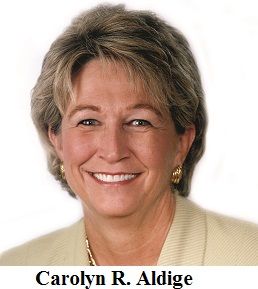Article
New Digital Tool to Compare Insurance Coverage for Cancer Screening Tests
Author(s):
The Prevent Cancer Foundation has developed a digital tool that can compare coverage of screening tests for breast, cervical, colorectal, lung, and prostate cancers across health insurance plans available in a specific state.
A review by the Prevent Cancer Foundation has found that insurance coverage of cancer screening tools varies based on the health plan. With this in mind, the Foundation has developed a digital tool that can compare coverage of screening tests for breast, cervical, colorectal, lung, and prostate cancers across health insurance plans available in a specific state.

The review, Cancer Screening: A Review of Guidelines and Insurance Coverage, summarizes current screening options and provides an overview of screening guidelines issued by the American Cancer Society, the National Comprehensive Cancer Network, and the US Preventive Services Task Force (USPSTF), in addition to a comparison of screening coverage by the 30 biggest health insurers in the United States. The following are a few key findings of this report:
- Only 13 of the 30 plans cover 3D mammography for breast cancer screening.
- Virtually every plan covers low-dose computed tomography for lung cancer screening; Pap tests alone or in combination with HPV tests for cervical cancer screening; and fecal occult blood test, stool-based DNA testing, colonoscopy, and flexible sigmoidoscopy for colorectal cancer screening.
- Twenty-eight plans cover prostate-specific antigen (PSA) test for prostate cancer screening, even though the USPSTF does not recommend this test for men at average risk of the disease.
While the USPSTF has assigned a D rating for using the PSA test to screen for prostate cancer, healthcare providers and health plans do not necessarily follow these recommendations. Carolyn R. Aldigé, president of the Prevent Cancer Foundation, told The American Journal of Managed Care (AJMC) in an e-mail that the Foundation’s annual meeting, Dialogue for Action, helps convene a variety of stakeholders to discuss such issues “and to provide information for individuals to engage in shared decision making with their providers.”
The study observed the following trend with breast cancer screening:
Screening Test
Plans Covering
Plans Not Covering
Plans Without Policy
Mammography (2D)
132
0
274
Breast Tomosynthesis (3D)
47
45
313
In an associated press release, the Prevent Cancer Foundation recommends that patients should discuss these inconsistencies, which could be a result of the guideline discrepancies across organizations. Aldigé told AJMC that the Foundation strives to educate and inform the public on the differences in guidelines and to clear any confusion that exists with using them.
“Effective cancer screening can lead to early detection of these potentially deadly diseases—but the variation between guidelines allows insurance companies to adopt cancer screening policies that may adversely affect patients’ access to preventive services,” Bernard Levin, MD, co-chair of the Prevent Cancer Foundation Scientific Review Panel, said in a statement.
The tool and the e-book can be accessed here.




